Examples of different types of spiders, with examples and pictures of each. Discover the characteristics of the main spider groups, and learn how to identify types of spiders such as tarantulas, funnel-web spiders, orb-weavers, jumping spiders and more.
Spiders
Spiders are arachnids belonging to the order Araneae. There are around 50,000 described species of spiders.
At the time of writing (Oct 23), the Catalogue of Life lists 49,712 spider species (source) and the World Spider Catalogue lists 51,480 species (source)
Arachnids
All spiders are arachnids; other arachnid groups include scorpions, camel spiders, ticks and mites. Arachnids are part of a larger group of invertebrate animals, the arthropods, which also contains animals such as insects and crustaceans.
You can find out more about arachnids, arthropods, and other invertebrate groups on the pages below:
Types Of Spiders
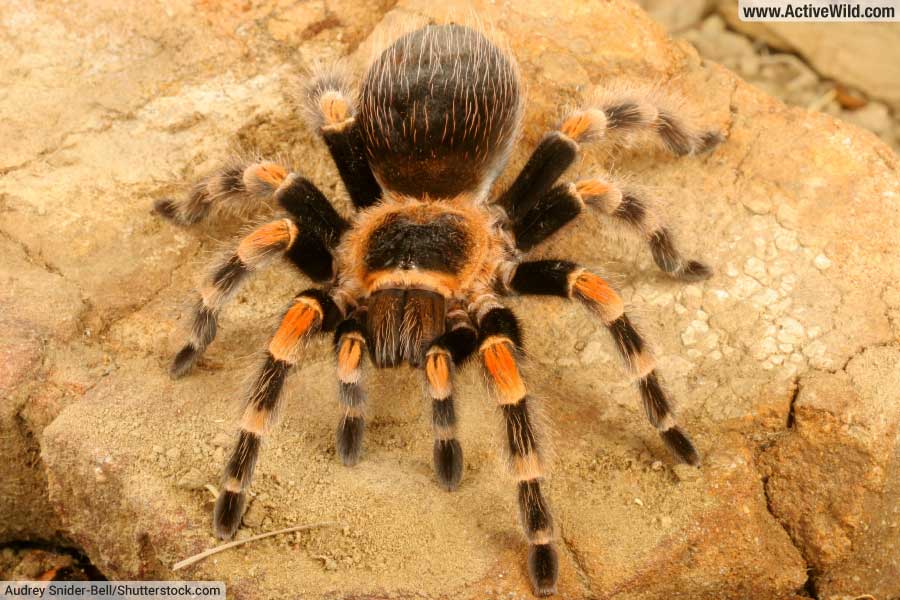
The three main types of spiders are: the suborder Mesothelae, which contains a relatively small number of primitive spiders, all of which are found in Southeast Asia; the infraorder Mygalomorphae, which contains tarantulas and other spiders with downwards-facing fangs; and the infraorder Araneomorphae, the largest group, which contains orb-weavers, jumping spiders, recluse spiders and many others.
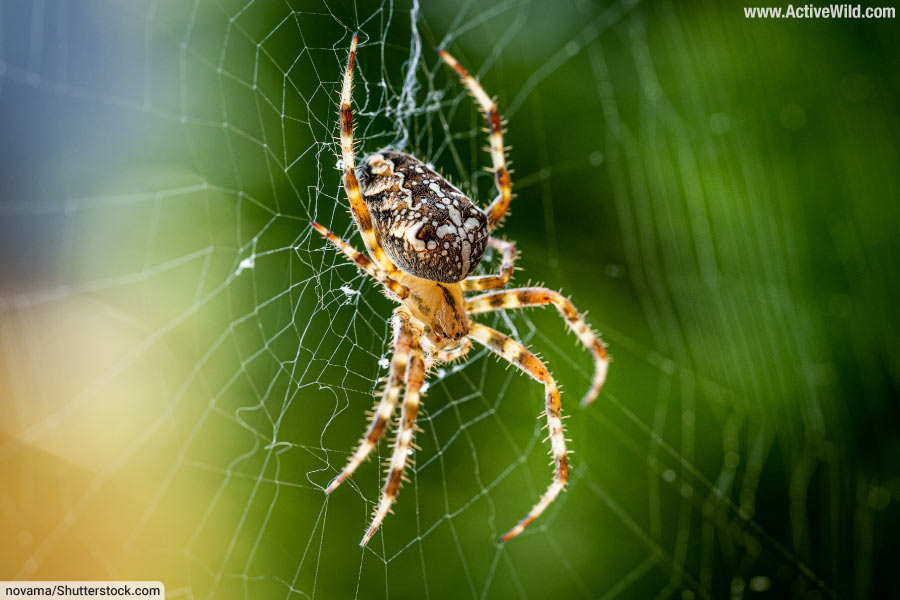
On this page are listed many of the main types of spiders, e.g. orb-weavers, tarantulas, huntsmen spiders, funnel-web spiders, etc., together with at least one example species from each group.
The spiders on this page are separated into the three main spider groups, Mesothelae, Araneomorphae and Mygalomorphae.
Suborder Mesothelae
The order Araneae, which contains all spiders, is divided into two suborders: Mesothelae and Opisthothelae.
Mesothelae is the most primitive group of spiders, and it contains only a relatively small number of species (around 170 of the around 50,000 known spider species).
Opisthothelae is split into two infraorders, Mygalomorphae and Araneomorphae. Spiders belonging to each of these groups are listed further down the page.
The very first spiders, which are thought to have appeared in the Carboniferous period, tens of millions of years before the dinosaurs, may have resembled living Mesothelae spiders.
The spiders in Mesothelae have a segmented abdomen, which is a characteristic not seen in spiders that evolved later. Due to this characteristic, spiders in this group are also known as segmented spiders.
The only family in this group is Liphistiidae, members of which are found in Southeast Asia. Spiders of family Liphistiidae are burrowing spiders characterized by the trapdoor-like structures on their burrows.
Segmented Spiders
- Suborder: Mesothelae
- Family: Liphistiidae
One of the most primitive living groups of spiders, these are found in Southeast Asia. They have a segmented abdomen, which is unique among spiders.
Liphistius Desultor

Liphistius Desultor is a type of trapdoor spider found in Malaysia. Like other members of the family Liphistiidae, it constructs a burrow with a trapdoor. Here it lies in wait to ambush passing prey animals.
Heptathela Higoensis

A species within the Liphistiidae family, Heptathela higoensis is a primitive burrowing spider endemic to Japan.
Suborder Opisthothelae
The suborder Opisthothelae, which contains the majority of spider species, is divided into two infraorders: Araneomorphae and Mygalomorphae.
Each of these major groups contains numerous sub-groups. Araneomorphae, for example, is home to groups such as crab spiders, orb-weavers, and jumping spiders; Mygalomorphae is home to tarantulas and Australian funnel-web spiders.
Infraorder Araneomorphae
Cellar Spiders / Daddy Long-Legs Spiders
- Suborder: Opisthothelae
- Infraorder: Araneomorphae
- Family: Pholcidae
Recognized by their extremely long and thin legs, these spiders are often found in dark, damp environments such as cellars and caves. They have small bodies compared to their leg span. They construct loose, irregular webs and many species actively hunt other spiders.
There is an urban myth that these long-legged spiders are highly venomous, but that their fangs are too short to deliver a harmful bite. This is incorrect; their fangs are able to pierce human skin, however, the venom is not harmful to humans, and bites are incredibly rare.
Long-Bodied Cellar Spider

- Scientific Name: Pholcus phalangioides
- Where Found: Found worldwide, particularly in human dwellings.
- Size: Body length of up to 9mm.
A spider with long, thin legs that is often found on walls and ceilings. Although also known as the daddy long-legs spider, this spider should not be confused with harvestmen. (Harvestmen are also known as daddy longlegs, but belong to the arachnid order Opilones, and are not spiders.)
(In the UK, craneflies, which are insects, not arachnids, are also known as daddy long-legs.)
Crab Spiders
- Suborder: Opisthothelae
- Infraorder: Araneomorphae
- Family: Thomisidae
These spiders have a crab-like appearance due to their flattened bodies and leg arrangement. They don’t spin typical webs but instead lie in ambush on flowers and plants, where they seize their prey. Their coloration often matches their chosen ambush spot, providing excellent camouflage.
Goldenrod Crab Spider

- Scientific Name: Misumena vatia
- Where Found: North America and Europe.
- Size: Females range from 8-10mm, males are smaller at about 5mm.
A flower-dwelling spider that can change its color from yellow to white to camouflage with flowers. It ambushes its prey by waiting on flowers for insects to come within grasp.
Fishing Spiders
- Suborder: Opisthothelae
- Infraorder: Araneomorphae
- Family: Pisauridae
- Genus: Dolomedes
Found mainly near freshwater, these spiders are capable of catching small fish and aquatic insects. Their large size and hydrophobic legs enable them to walk on the water’s surface.
Fishing spiders sense the vibrations of potential prey via the surface of the water, much as land-based spiders sense vibrations in their web.
Dark Fishing Spider (Dolomedes tenebrosus)
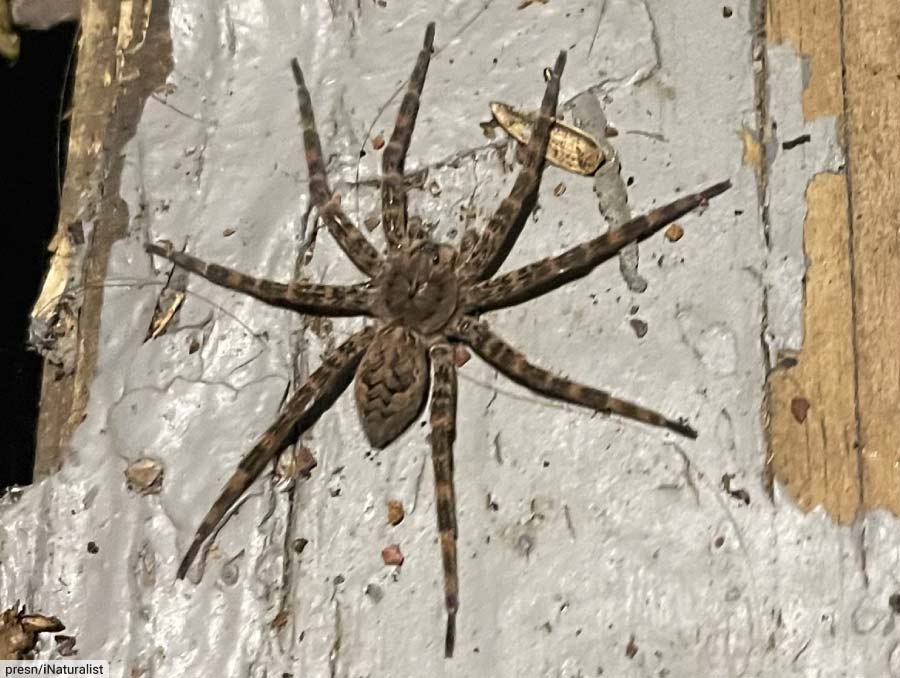
- Scientific Name: Dolomedes tenebrosu
- Where Found: Eastern North America
- Size: Females have a body length of up to 2.6 cm; males are about half that size.
As the name suggests, these spiders are often found near water and are capable of catching small fish and aquatic insects. They can walk on water and even dive beneath the surface, encased in a silvery pocket or air, in pursuit of prey.
As members of the nursery web spider family (see further down the page), female fishing spiders are known for their maternal care, guarding their egg sacs and young diligently.
Golden Orb-Weavers
- Suborder: Opisthothelae
- Infraorder: Araneomorphae
- Family: Nephilidae
These are large, impressive spiders primarily recognized for their sizable, intricate webs that possess a golden sheen. These webs are extremely strong. The spiders themselves can vary in color, but females are often brightly colored with a mix of yellow, brown, and sometimes white patterns. They’re commonly found in warm, tropical climates across the globe.
Golden Silk Orb-Weaver / Golden Silk Spider

- Scientific Name: Trichonephila clavipes (formerly Nephila clavipes)
- Where Found: Southern United States to Argentina, including parts of the Caribbean.
- Size: Females can reach body lengths of 40mm, with males being much smaller at around 5mm.
Known for weaving large, strong, golden-yellow webs, these spiders are sexually dimorphic with females being much larger than males. The silk from their webs has been researched for its strength and potential applications.
Huntsman Spiders
- Suborder: Opisthothelae
- Infraorder: Araneomorphae
- Family: Sparassidae
Huntsman spiders are renowned for their large size and swift, crab-like movements. Native to warm, tropical climates worldwide, including Australia, Asia, Africa, and parts of the Americas, they possess a flat body and long legs. Unlike many spiders, huntsman spiders do not rely on webs but actively hunt for their prey at night, taking refuge under bark, rocks, or inside homes during the day.
While their sudden appearances can startle humans, they are generally not harmful. A bite from a huntsman spider can be painful but is rarely dangerous. Their presence is beneficial, as they play a vital role in controlling pest populations by preying on various insects.
Giant Huntsman Spider
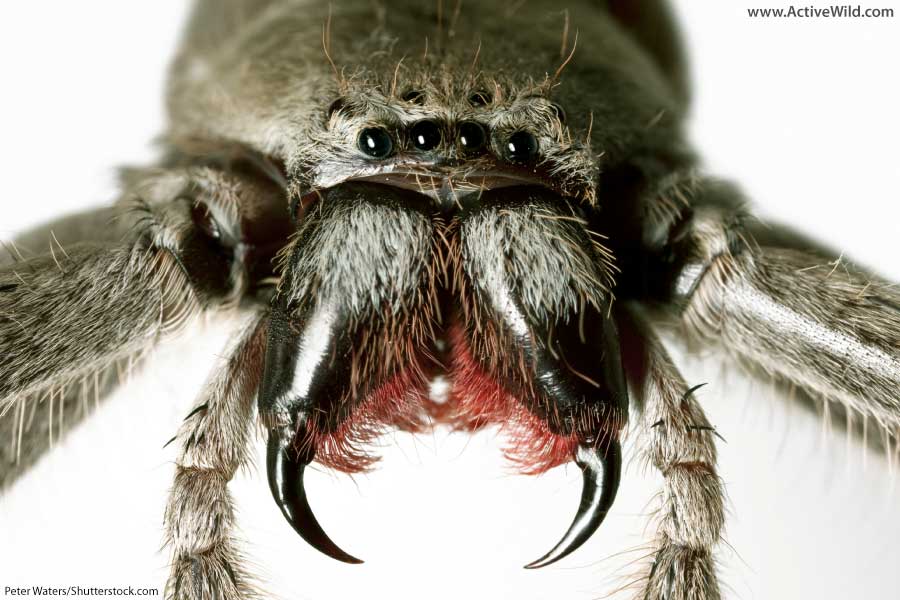
- Scientific Name: Heteropoda maxima
- Where Found: Caves in Laos.
- Size: Leg span of up to 30 cm, making it one of the world’s largest spiders by leg span.
Known for its enormous size, this spider does not build a web to catch its prey but rather hunts and captures it using speed and agility.
The giant huntsman spider is the world’s largest spider by leg span, but not by body mass (that title belongs to the Goliath birdeater, which is listed further down the page).
Jumping Spiders
- Suborder: Opisthothelae
- Infraorder: Araneomorphae
- Family: Salticidae
These are compact, agile spiders known for their exceptional vision — they have four pairs of large, forward-facing eyes that give them almost 360-degree vision. They are active hunters, using their keen eyesight to track and then leap onto their prey. They have a diverse range of colors and patterns, making some species quite vibrant and distinctive.
With 6,398 species (source), The family Salticidae is the largest spider family.
Zebra Jumping Spider

- Scientific Name: Salticus scenicus
- Where Found: Across the Northern Hemisphere, particularly in Europe and North America.
- Size: Around 5-7mm in length.
A small, agile jumping spider with distinctive black and white striping. Known for its excellent vision and curious nature, often tilting its head to observe objects.
Lynx Spiders
- Suborder: Opisthothelae
- Infraorder: Araneomorphae
- Family: Oxyopidae
These are agile, daytime hunters often found on plants. They have spiny legs and tend either to have drab coloration, or to be bright green. Lynx spiders actively hunt insects without the use of webs, typically ambushing pollinators visiting flowers.
Green Lynx Spider

- Scientific Name: Peucetia viridans
- Where Found: Southern United States down to Colombia, often in shrubby areas.
- Size: Females can reach up to 22mm in length, while males are smaller, around 12mm.
A bright green spider with spiny legs. It does not build a web but waits in ambush on plants to capture its prey. Often found on shrubs and flowering plants.
Nursery Web Spiders
- Suborder: Opisthothelae
- Infraorder: Araneomorphae
- Family: Pisauridae
These spiders don’t build webs to capture prey but use them to create a “nursery” for their offspring. They are known to carry their egg sacs with their jaws and will build the nursery web when the spiderlings are about to emerge.
This family contains fishing spiders and raft spiders, both of which are associated with water.
European Nursery Web Spider

- Scientific Name: Pisaura mirabilis
- Where Found: Across Europe and parts of Asia.
- Size: Body length of about 1.5 cm for females; males are slightly smaller.
These spiders are known for their unique reproductive behavior, where the female carries her egg sac in her jaws and, when close to hatching, attaches it to vegetation and constructs a ‘nursery’ web around it to protect the emerging spiderlings.
Orb Weavers
- Suborder: Opisthothelae
- Infraorder: Araneomorphae
- Family: Araneidae
Among the most well-known spiders, orb weavers create the classic, spiral wheel-shaped webs that are often highlighted by morning dew. With almost 3,000 species, Araneidae is one of the largest spider families.
Yellow Garden Spider
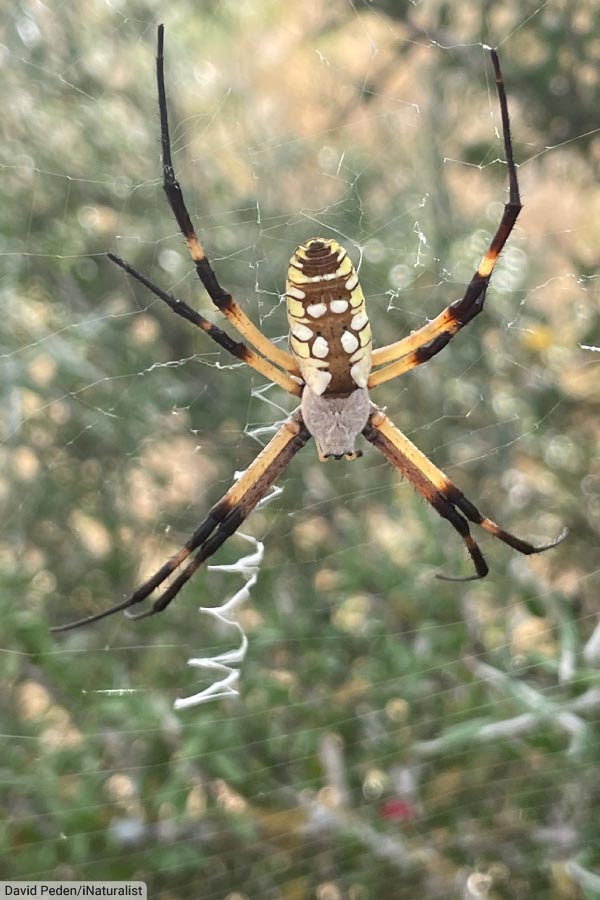
- Scientific Name: Argiope aurantia
- Where Found: Throughout the United States, Central America, and parts of Canada.
- Size: Females range from 19-28mm, males are smaller at 5-9mm.
A large, bright yellow and black orb-weaving spider. The species is known for the zig-zag patterns (stabilimenta) in its web, which is a common sight in gardens and meadows in the United States and much of Canada and Mexico.
Recluse Spiders
- Suborder: Opisthothelae
- Infraorder: Araneomorphae
- Genus: Loxosceles
Also known as brown spiders or fiddle-backs due to a violin-shaped mark on their back. They are notorious for their necrotic venom which can lead to tissue damage in humans.
Brown Recluse
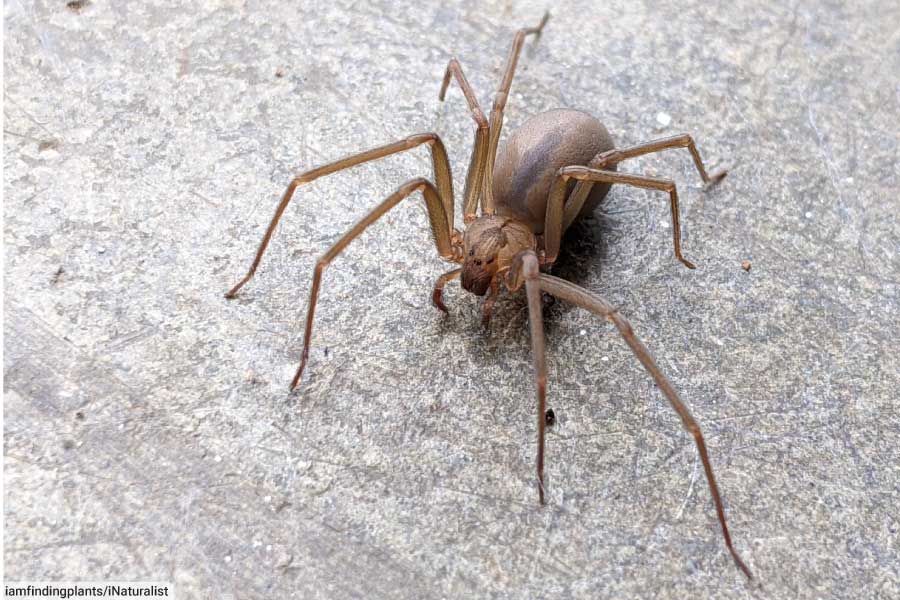
- Scientific Name: Loxosceles reclusa
- Where Found: Central and Southern United States.
- Size: Between 6-20mm in length.
A brown spider with a violin-shaped mark on its cephalothorax (the front section of a spider’s two-part body). It is known for its venomous bite, which can cause significant skin lesions in humans. They are often found in undisturbed, dry locations, such as basements or attics.
Tangle-Web Spiders
- Suborder: Opisthothelae
- Infraorder: Araneomorphae
- Family: Theridiidae
This large group of spiders is known for the irregularly shaped, three-dimensional “tangle webs” constructed by many members of the family. Members of this group are also known as “cobweb spiders” and “comb-footed spiders”.
Some members of this family, such as the redback and black widows, are highly venomous.
Redback Spider
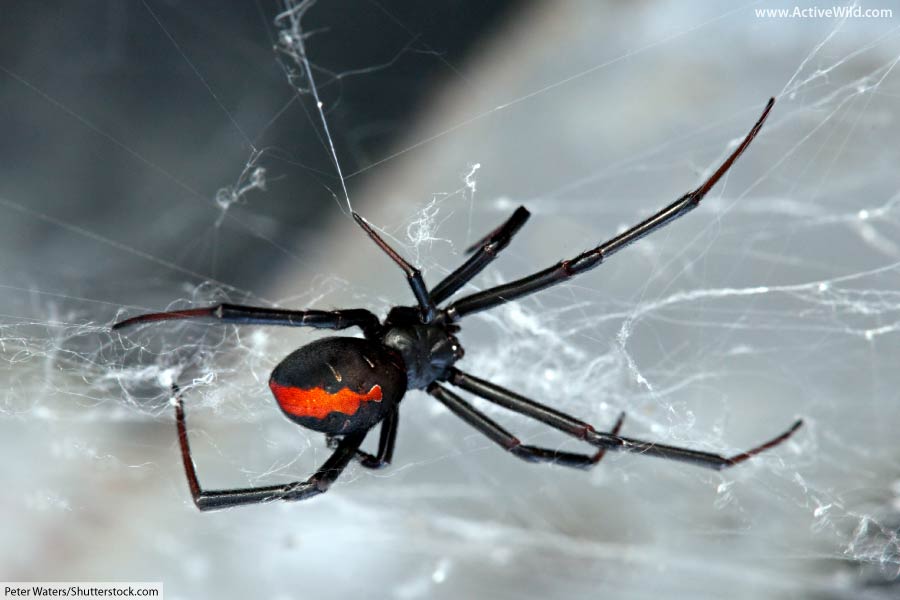
- Scientific Name: Latrodectus hasselti
- Where Found: Australia, with some reports from Southeast Asia.
- Size: Females around 10mm, males much smaller at around 3-4mm.
Closely related to the black widow spider, it’s known for the red stripe on its abdomen. Its venomous bite can be dangerous to humans.
You can find out more about this spider on this page: Redback Spider Facts
True Widows
- Suborder: Opisthothelae
- Infraorder: Araneomorphae
- Genus: Latrodectus
This genus of tangle-web spiders includes the famous black widow spiders, known for the iconic red hourglass shape located on the abdomen. They produce a potent neurotoxic venom. Bites can cause severe pain in humans but are rarely fatal.
Southern Black Widow

- Scientific Name: Latrodectus mactans
- Where Found: Southeastern United States.
- Size: Females are about 8-10mm in body length, males are smaller.
Glossy black with a distinctive red hourglass shape on the underside of its abdomen. Known for its potent venom, which can be dangerous to humans.
The southern black widow is closely related to other North American black widow species: western black widow (Latrodectus hesperus) and northern black widow (Latrodectus variolus).
Water Spider
- Suborder: Opisthothelae
- Infraorder: Araneomorphae
- Species: Argyroneta aquatica
Also known as the diving bell spider, the water spider is the only species of spider known to live almost entirely underwater. It creates a silken “diving bell” filled with air which allows it to remain submerged for extended periods.
Diving Bell Spider or Water Spider
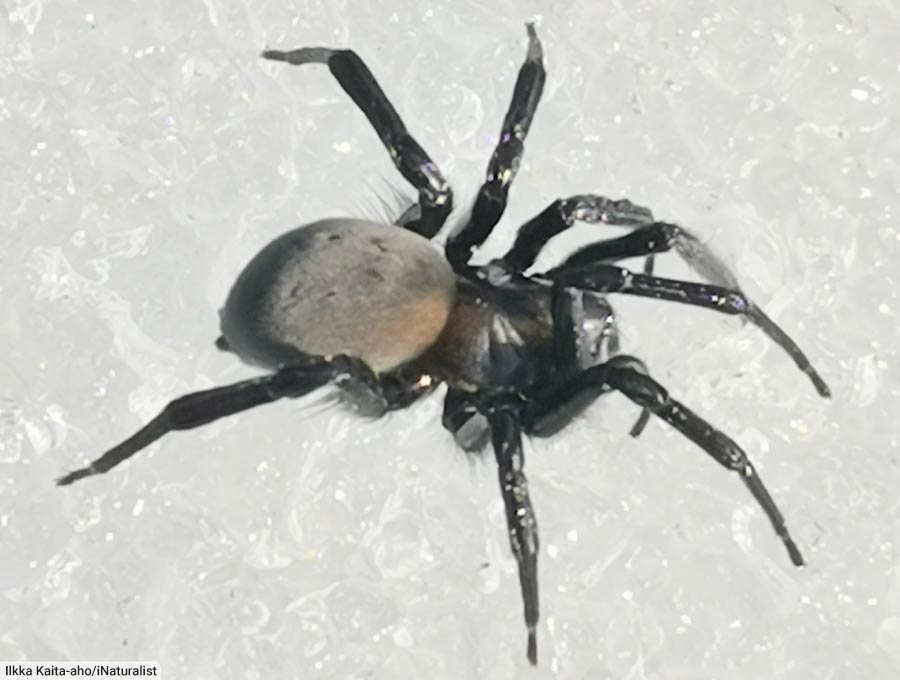
- Scientific Name: Argyroneta aquatica
- Where Found: Northern and Central Europe to Northern Asia.
- Size: Up to 15mm for females, males are slightly smaller.
The only spider known to live almost entirely underwater. It creates a ‘diving bell’ web filled with air.
Wolf Spiders
- Suborder: Opisthothelae
- Infraorder: Araneomorphae
- Family: Lycosidae
These are robust, fast-moving spiders that reside on the ground. Instead of relying on webs to catch prey, they actively hunt and pounce. Wolf spiders are often brown or gray with stripe patterns and are recognized by their unique eye arrangement of four small eyes in a row at the front and four larger eyes behind.
Tarantula Wolf Spider

- Scientific Name: Lycosa tarantula
- Where Found: Mediterranean region.
- Size: Females up to 30mm in body length, males slightly smaller.
A large, hairy spider that burrows in sandy soils. Historically associated with the tarantella dance, which was believed to be a cure for its bite. Despite its name, this spider is not a true tarantula.
Infraorder: Mygalomorphae
This group of spiders, whose best-known members are tarantulas and funnel-web spiders, is characterized by large, downward-pointing chelicerae (fangs). Species in this group are usually large, with a robust build.
Mygalomorphae are far longer-lived than spiders of infraorder Araneomorphae, with some species living over 20 years (a female trapdoor spider had a recorded lifespan of 43 years).
Most species in this group are burrowers and have two pairs of book lungs. (Book lungs are a type of respiratory organ, named for their resemblance to a folded book, found in arachnids.)
Australian Funnel-Web Spiders
- Suborder: Opisthothelae
- Infraorder: Mygalomorphae
- Family: Atracidae
Highly venomous spiders native to Australia. They build funnel-shaped webs and are notorious for their potent venom, which can be lethal to humans, especially in the Sydney Funnel-Web Spider.
Sydney Funnel-Web Spider

- Scientific Name: Atrax robustus
- Where Found: Sydney region in New South Wales, Australia.
- Size: Body length about 1.5 to 3.5 cm (0.6 to 1.4 inches)
A highly venomous spider, it’s notorious for its strong fangs and aggressive nature. Its venom is particularly dangerous to humans.
You can find out more about this spider on this page: Sydney Funnel Web Spider Facts
Folding Trapdoor Spiders
- Suborder: Opisthothelae
- Infraorder: Mygalomorphae
- Family: Antrodiaetidae
These spiders are mostly found in North America and create burrows with camouflaged lids or “trapdoors”, which they suddenly open to capture unsuspecting prey.
Pacific Foldingdoor Spider
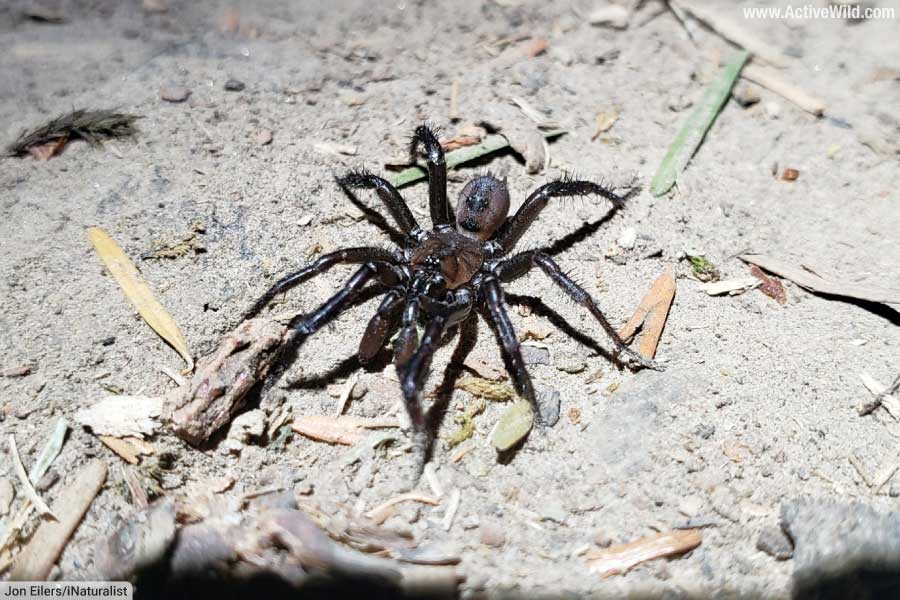
- Scientific Name: Antrodiaetus pacificus
- Where Found: Western United States, particularly in the Pacific Northwest region.
- Size: Females range from 13-19mm, while males are slightly smaller.
This spider is a type of trapdoor spider. It constructs burrows with a camouflaged lid (like a trapdoor) and waits for prey to come close before ambushing. The spider is usually brown or reddish-brown in color and is not considered dangerous to humans.
Tarantulas
- Suborder: Opisthothelae
- Infraorder: Mygalomorphae
- Family: Theraphosidae
Tarantulas are among the largest spiders in the world. They are hairy, robust, and ground-dwelling, often found in warm regions. Most species create burrows or use natural shelters. They have a variety of hunting strategies but often ambush their prey.
While their size can be intimidating, most tarantulas are harmless to humans, and their bite, though painful, is usually not dangerous. Some people even keep tarantulas as pets.
Mexican Redknee Tarantula

- Scientific Name: Brachypelma smithi
- Where Found: Pacific coast of Mexico.
- Size: Leg span up to 20 cm (about 8 inches)
- IUCN Conservation Status: Near Threatened
A popular pet tarantula due to its calm demeanor and striking red and black coloration on its knees.
You can find out more about this spider on this page: Mexican Redknee Tarantula Facts
Johnny Cash Tarantula
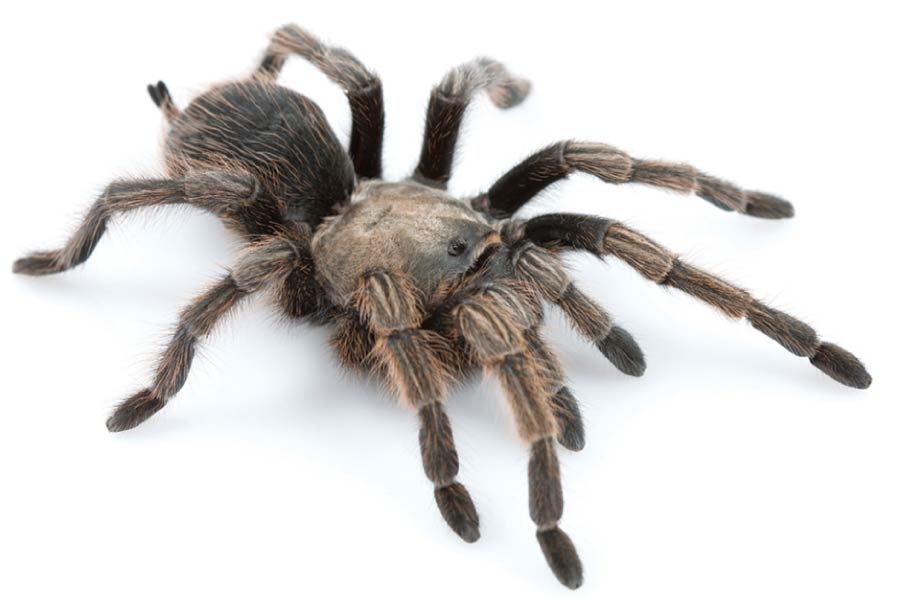
- Scientific Name: Aphonopelma johnnycashi
- Where Found: Western foothills of the Sierra Nevada Mountains in California.
- Size: Approximately 14cm leg span.
A black tarantula named in honor of the singer Johnny Cash. Found in grassland habitats near the Sierra Nevada Mountains.
Goliath Birdeater
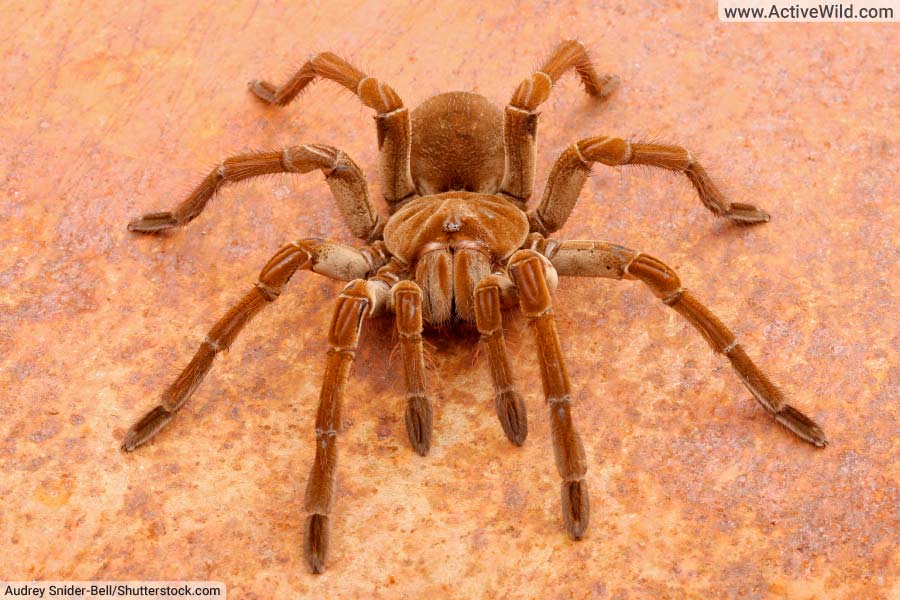
- Scientific Name: Theraphosa blondi
- Where Found: Rainforests of northern South America, especially in Brazil, Venezuela, and Guyana.
- Size: Leg span up to 30 cm (about 12 inches)
The world’s largest spiders by mass and body length, the Goliath Birdeater is a nocturnal species. The species is named for its ability to eat birds, though such instances are rare.
Wandering Spiders
- Suborder: Opisthothelae
- Infraorder: Mygalomorphae
- Family: Ctenidae
These spiders are native to tropical regions and are known for their wandering habits rather than residing in webs. Some species in this family, especially the Brazilian wandering spider, are considered to be among the most venomous spiders in the world.
Brazilian Wandering Spider

Scientific Name: Phoneutria fera
- Where Found: Northern South America, including the Amazon basin in countries such as Brazil, Venezuela, Ecuador, and northern Peru.
- Size: Leg span up to 13-15 cm (about 5-6 inches)
Also known as the banana spider or armed spider, Phoneutria fera is considered one of the world’s most venomous spiders. It has potent neurotoxic venom and is known for its wandering behavior, often found in human dwellings or plantations.
Several other, related, spiders also go by the name of Brazilian wandering spider, including Phoneutria nigriventer.

